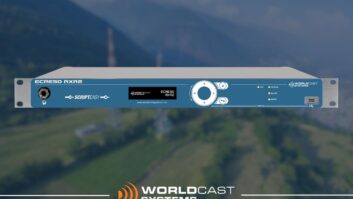The FCC said “no” to a request from Venture Technologies Group to modify a digital construction permit for KFMP(LP), Lubbock, Texas and a digital companion channel CP for WBPA(LP), Pittsburgh. Both are Channel 6 CPs and the Pittsburgh item is of particular interest because VTG proposed operating that low-power television station as a hybrid analog/digital version of a so-called “Franken-FM.”
Radio dubbed them Franken-FMs because they’re LPTV stations operating on the analog audio carrier of a TV Channel 6 at 87.7 and 87.9 MHz.
VTG proposed using a transmission method different than the one that has been adopted for digital TV broadcasting, according to the FCC. Specifically, VTG wanted to use Axcera Transmitter Bandwidth Enhancement Technology, which can reduce the bandwidth of the proposed facility’s 8VSB transmission, to transmit an ancillary frequency modulated signal that is +75 kHz wide that will not interfere with the reception of the stations’ ATSC transmission. According to VTG, this ancillary service would be centered at 5.7 MHz from the bottom of VTG’s 6 MHz channels and outside of the primary BET Narrowband ATSC transmission.
It would have a maximum ERP of 33% of the average level of the digital signal. This ancillary carrier would be duplicative with the audio carrier of the video signal of the stations on PSIP 6.2, according to the commission.
The FCC says a digital LPTV transmitter must comply with ATSC standards. Those require the use of 8VSB transmission on all the subchannels, however this proposal suggests to use 8VSB standard for the primary channel and using the other subchannel to broadcast an analog audio signal.
VTG had argued that no interference would occur to other stations from its proposed facilities, but the commission hasn’t adopted rules regarding engineering protection requirements for what the Video Division is calling “hybrid” analog/DTV stations to other DTV stations that want to use Channel 6.
There are published D/U ratios for DTV-into-DTV and Analog-into-DTV co-channel operation, but there are no D/U ratios for “hybrid”-into-DTV operation. In its decision, the FCC said VTG’s proposal is likely to increase the interference potential to co-channel DTV operations because the scheme would increase the total power of its Channel 6 operations by 33%. That, in turn, may reduce the number of DTV stations that might operate on channel 6 and/or reduce the populations served by those DTV stations, concluded the agency in denying the proposal.
Analog LP TV stations operating as radio stations have a limited shelf life; they’re due to sunset in 2015.
Related:







